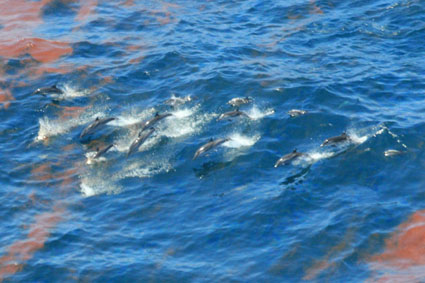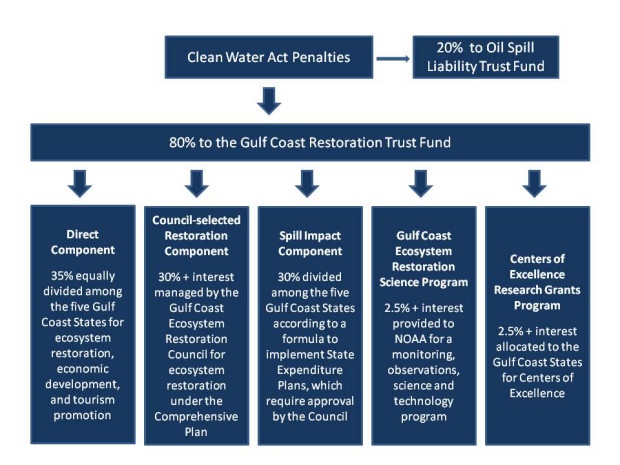We have much more to do and your continued support is needed now more than ever.
Will the RESTORE Act Actually Restore the Gulf of Mexico?

And the Gulf was suffering even before the disaster struck. The Gulf Coast has repeatedly been devastated by hurricanes and experienced decades of degradation from oil and gas production. The Gulf Coast is losing more wetlands than anywhere else in the United States and it is losing them more rapidly than ever before. It has lost well over half of its natural oyster reefs that filter the water that flows into the Gulf and provide habitat for many species. Seagrass habitat is declining and stormwater is polluting coastal areas undergoing rapid urbanization.
Right now, we have the opportunity to address the ongoing impacts of the disaster as well as the Gulf’s pre-existing environmental problems—but only if we make our voices heard.
Congress passed a law called the RESTORE Act with strong bipartisan support in the summer of 2012. This law will send 80% of Clean Water Act civil fines paid by BP and other parties responsible for the disaster back to the Gulf States to support restoration efforts aimed at sustaining the health of the Gulf for future generations.
This has never been done before in response to any other oil spill. Typically, Clean Water Act fines – which are based on the negligence of the responsible parties and the amount of oil spilled – would go into a federal trust fund to use in response to future spills. The RESTORE Act sends those dollars right to the damaged communities themselves.
Money from the RESTORE Act will flow into different “pots,” each with its own restrictions:
- Pot 1 – 35%: Each Gulf Coast state will get the same amount of money to implement a state plan that will fund projects such as restoring wildlife habitats and improving water quality. This pot also includes a few vague categories like “job creation” and “infrastructure projects that benefit the economy,” which sound good but could open the door to spending the money on projects that won’t help the Gulf—and could cause further degradation.
- Pot 2 – 30% plus interest: The Gulf Coast Ecosystem Restoration Council will draft and implement a comprehensive plan for restoring the ecosystem of the Gulf of Mexico. In their plan, the Council argued that economic restoration of the Gulf Coast will be a natural result of funding ecosystem restoration programs and projects.
- Pot 3 – 30%: Each Gulf Coast state is required to develop and then implement a restoration plan that complies with the Council’s Gulf-wide plan. Heavily-oiled Louisiana will likely largest portion of this money, but each state is guaranteed a minimum percentage of funds from this pot.
- Pot 4 – 2.5% plus interest: The National Oceanic and Atmospheric Administration (NOAA) will create and implement a Gulf Coast Science Program. This program will support marine and estuarine research projects, conduct monitoring, and collect data on fisheries.
- Pot 5 – 2.5% plus interest. Each Gulf Coast state will establish Centers of Excellence – research facilities – to focus on science, technology, and monitoring of a variety of different Gulf issues, such as deltas, commercial development, and mapping of the entire Gulf of Mexico.

Given all of the competing projects potentially eligible for RESTORE funding, we need to let our decision-makers know that that funding natural resource restoration projects is the key to protecting both the coastal environment and economy, now and for our children’s future.
This is our chance to respond to the disaster and we can’t let it pass us by.
![]() Ask the Secretary of Commerce to make sure every penny of RESTORE Act dollars is spent transparently on projects that improve the health of the Gulf!
Ask the Secretary of Commerce to make sure every penny of RESTORE Act dollars is spent transparently on projects that improve the health of the Gulf!





















